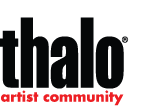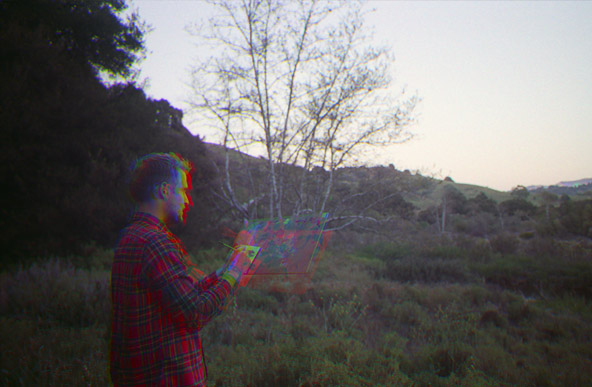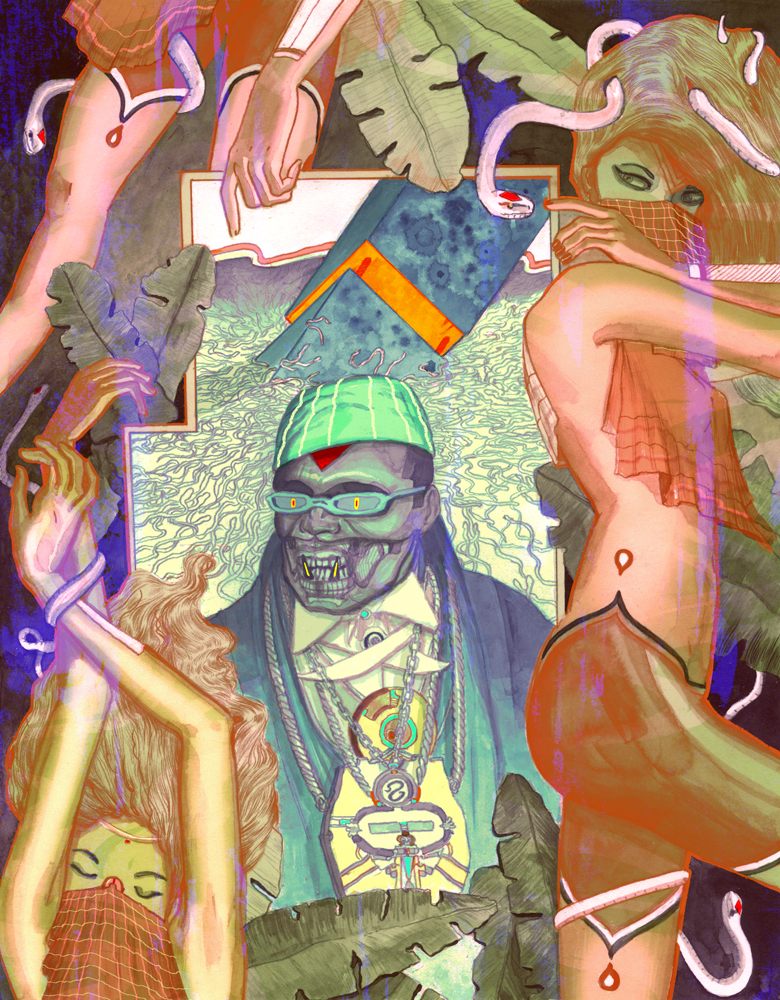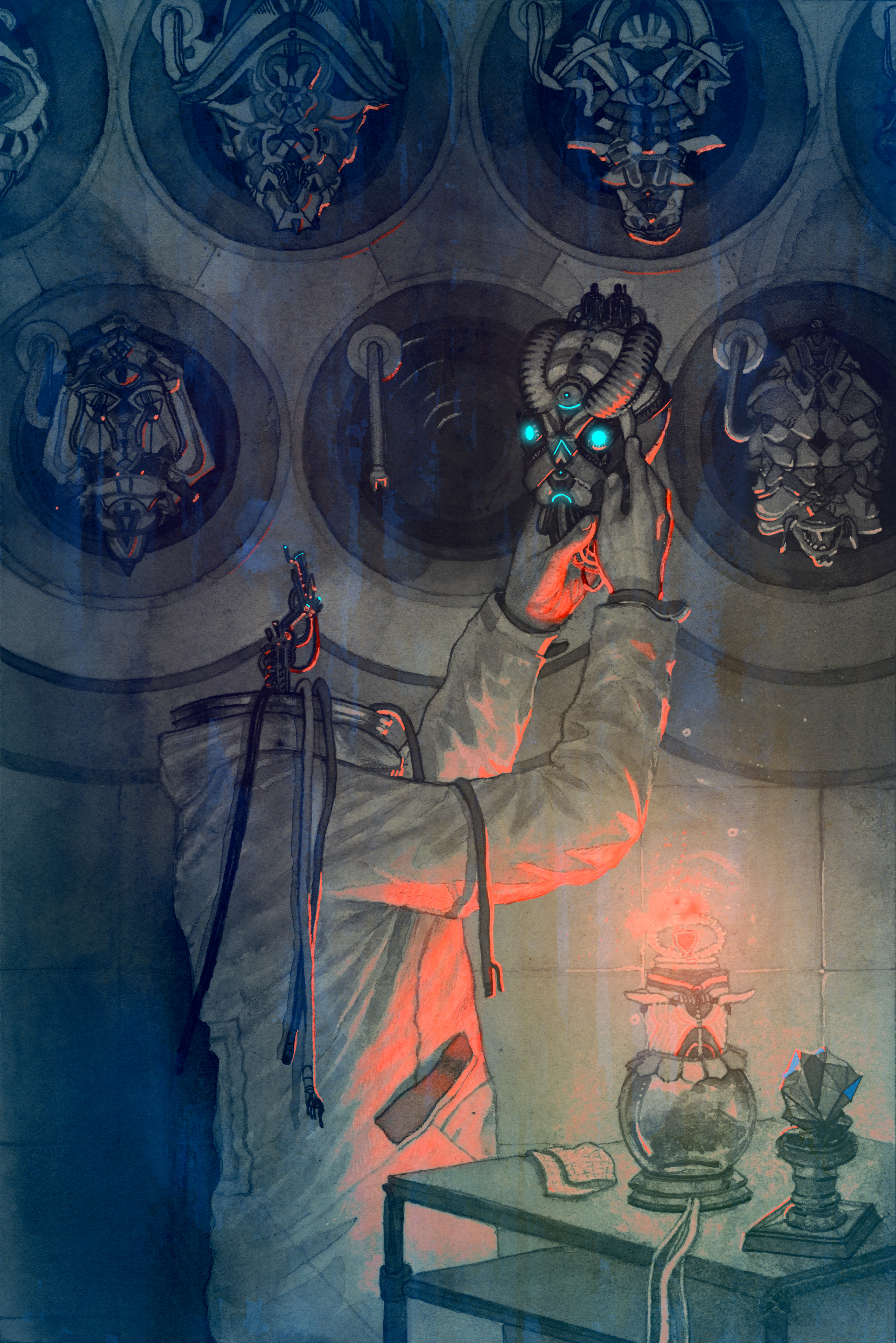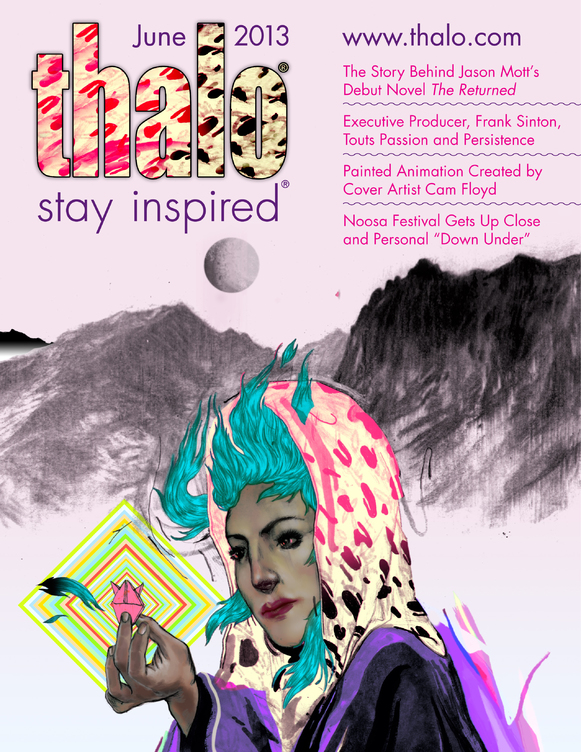
June 2013 Cover
Cover Arist: Cam Floyd
Cam Floyd was born in the deep south, educated halfway up the east coast at the Maryland Institute College of Art, and now resides in the far west of LA where he works as a freelance illustrator and gallery artist. Drawing influence from the Northern Renaissance, classic Sci-Fi illustration, the Pre-Raphaelites, and Modernism, his work combines narrative and figurative work with abstraction to create a push-pull between realistic and flat space. He has worked with in print such clients as The New York Times, Nylon, and Plansponsor Magazine as well as clients in music, film, and apparel. When not drawing or twiddling digital synth knobs, he spends his free time exploring the Malibu Mountains and surfing
thalo: Can you give us some background on this month’s cover piece, Inspection?
Cam Floyd: Inspection was created as a personal piece in which I wanted to depict the moment of discovery of some mysterious cosmic object. It shows a pivotal moment in some un-written narrative in which the object and the woman have an important role to play. A lot of my work consists of these single invented scenes that seem to be part of a larger story, even if that larger story is never revealed. It was also a media experiment in that I was hoping to combine traditional media with some digital element to create something that looked like a painted animation
th: Your work includes many different illustration styles (i.e. patterns, sketches, animation). What do you find appealing about each style? Do you have a favorite?
CM: Working with many styles is less limiting creatively. I’ve always liked many different mediums and could never just settle on one while “abandoning” the others. Each style also has its own inherent advantages and I try to draw on those when using different media. With traditional illustration I love exploring narrative possibilities and creating a complete scene with figures and environment. It draws on both your knowledge of drawing and story-telling. Working in patterning feels less restrictive in that it is based on a general theme rather than a specific narrative. It allows for more visual experimentation and works well with combining different mediums. As for sketching, it’s the most important stage of creating. It’s the most basic and immediate form of drawing and a place to explore ideas rather than worrying about the polished-finish of a piece. If something is interesting before it’s been well drawn then it will be more successful than a piece in which the interest lies in the strength of the drawing.
th: When creating, how do you stay inspired?
CM: Generally I try to keep a good ratio of creative input and output. I find that if I don’t have any good ideas it’s usually because I’ve been too worried about my own work and need to step outside and take in some new information. I try to read a lot, see movies, watch good TV, go to museums, hike, really anything that involves learning something new. While I work I like to listen to music, sometimes news radio, occasionally TV if I’m doing something more mindless. I listen to a lot of electronic music.
th: What would you tell students or recent graduates who are hoping to pursue careers in painting?
CM: Be ready to devote yourself and be the champion of your own work. Get used to no one caring whether you paint or not and find the reason you like to create – people will respond when they can tell you are passionate about what you made. Post-school painting life is much more individualistic and you have to be prepared to motivate and critique yourself. Also, be involved in the scene you are trying to succeed in – go to galleries, workshops, life-drawing sessions, drink-n-draws, meet your peers! Finally, draw every day no matter what.
th: Other than sketching and illustrating, are there any other creative pursuits that you enjoy?
CM: I have been playing instruments and making music since I was a little kid so it’s been a big part of my life throughout my Art education. From recorder to piano to guitar to computer, music has always been a counterpoint to making images. The two disciplines have so many parallels and I find that they often inform each other. Sometimes I try to solve visual problems by thinking about its sound equivalent or vice versa. For example, I find it’s useful to visually layout the structure of a song before arranging it musically or mimic the mood of a song in an image. Also, I produce electronic music and have released two EPs and mixtapes under the LA dance label – Body High. Sometimes I’ll perform live or DJ.
To learn more about Cam Floyd, please visit his website.
permalink | past covers
